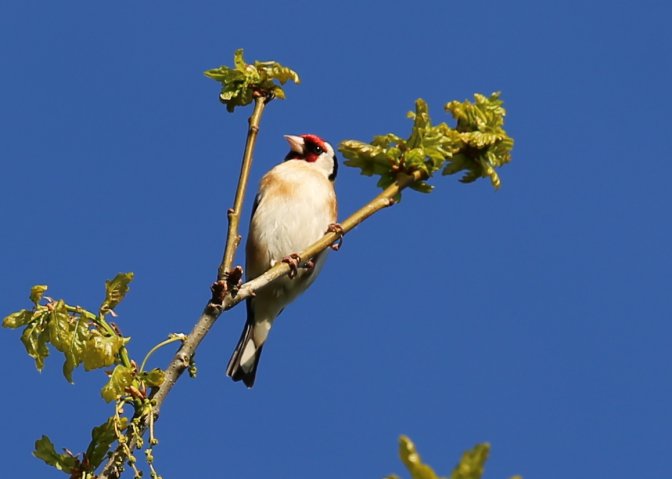Our attempts to identify birds was not going well. We could manage blackbirds, crows, magpies, buzzards, robins, swallows, hawks (but not what kind) and a few other common birds - mallard ducks and canada geese for example, but for ages we were never sure which were the coots and which the moorhens.
Fortunately the grebes have tufts (or should that be crests?) to distinguish them and we were chuffed to idenitfy oyster catchers down by the lake.
We wouldn't know if we saw a rare bird
We tried the books and the "apps" but the pictures in the books and on the phone didn't look like what we could see and by the time we got to the details which help distinguish six sorts or otherwise identical looking birds, the one we had been looking at had gone. We tried identifying them by their songs but we couldn't even agree on the song of a bird that woke us at 3:30 every morning with its loud and distinctive (at least we thought so) singing.
"You need to go out with an expert and learn from them," suggested a friend, "there must be an ornithological society or bird group in the area." No doubt she's right but I'm thinking of independence, not joining more societies or groups with rules and commitments and feeling pressured to turn up to show willing.
We wouldn't know if we saw a rare or scarce bird. We may have already seen the rarest of rare with only the unspoiled pleasure of seeing a bird as a bird as a bird. No kudos. People do see rare birds in Staffordshire and they are kind enough to take photos and make a list and there are lots of bird groups, some within my ten mile radius. But they all look like experts and what do they know?
With the right amount of optimism what could possibly go wrong?
But we independent minded, almost retired Staffordshire natives are enterprising. There was something we could do without experts. We could take photographs and then spend as long as we liked trying to match them to pictures in books, bird apps and from the web. Well yes, I know! If the final distinction between a really rare variety and a common variety was down to its song, then we would be left assuming it was the common sort and be for ever ignorant of our rare experience.
A good excuse for a new camera and a fancy lens. Make up for lack of knowledge with expensive technology. Works every time, doesn't it? A small investment and we'd be off. In no time at all we would be sending fuzzy shots of rare birds to local ornithological groups and high quality close up action shots of colourful birds to photo competitions and glossy magazine houses the world over.
And why stop there? We could give after dinner speeches about how we did it. After all wildlife cameramen get their own TV series describing how they suffer for their art, they're nearly as famous as David Attenborough himself, although in my case I don't plan on spending three years on a cold mountain in the middle of no where to get a few shots of the bird equivalent of the snow leopard.
No experience needed. With the right amount of optimism and a firm belief in our own innate abilities, the birthright of Staffordshire folk (native born and naturalised), what could possible go wrong?
Well, maybe we just weren't optimistic enough and all you experts out there - ornithologists and photographers alike - telling us it was difficult sabourtaged our efforts.
But I think you can tell they are birds and if you aren't any sort of expert and have only seen birds in the distance through the fog they may look OK. Just about.
